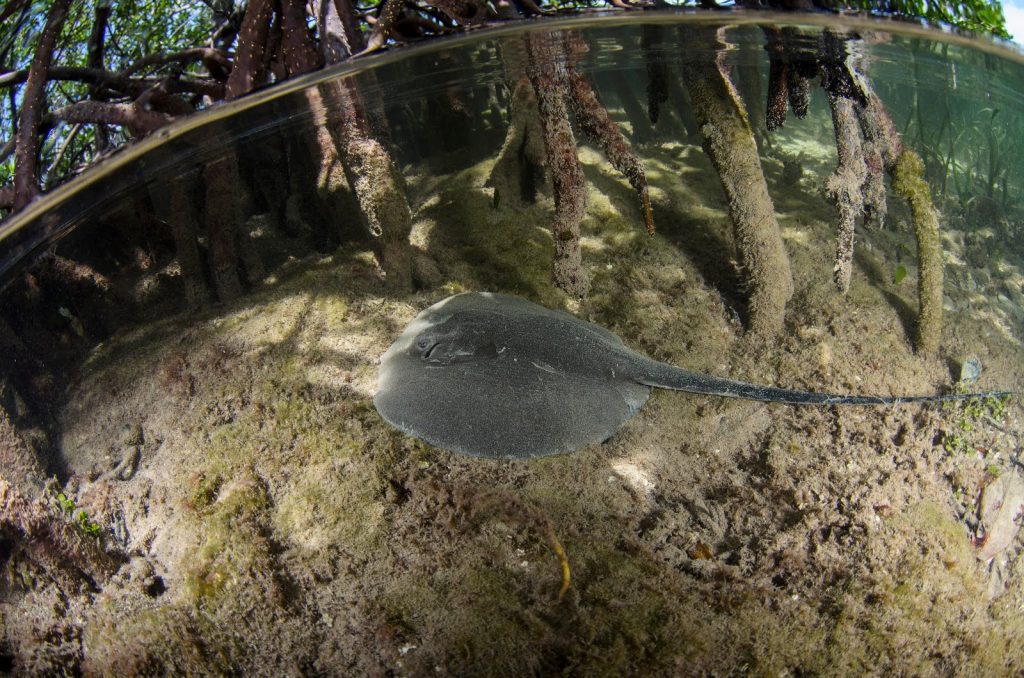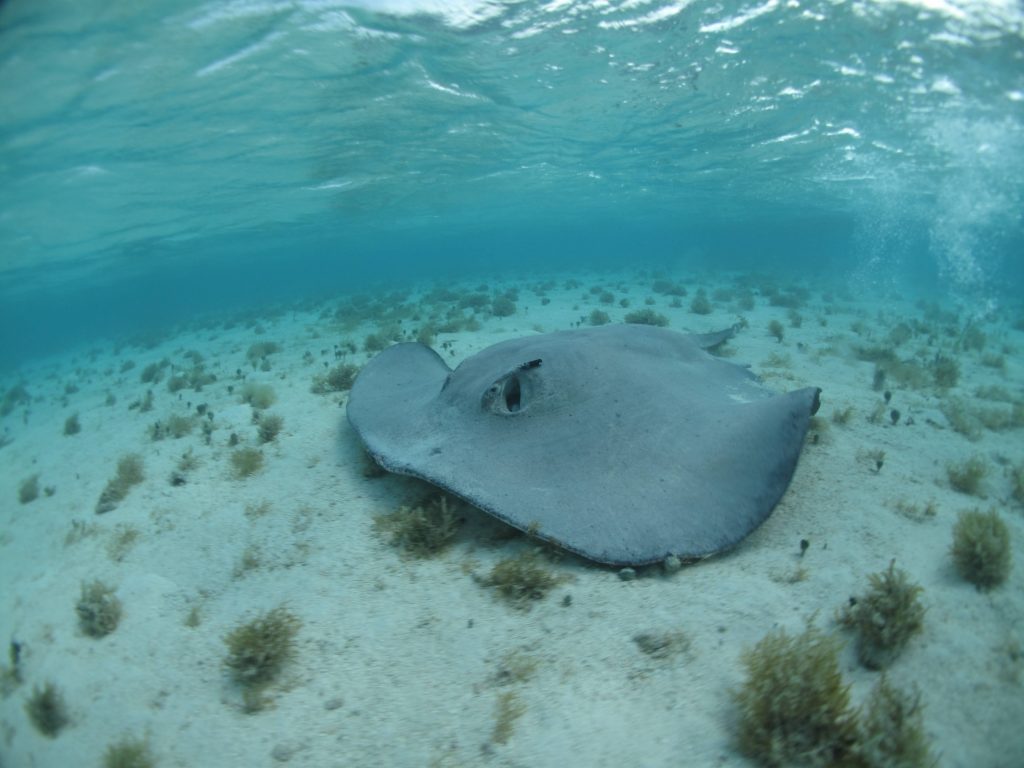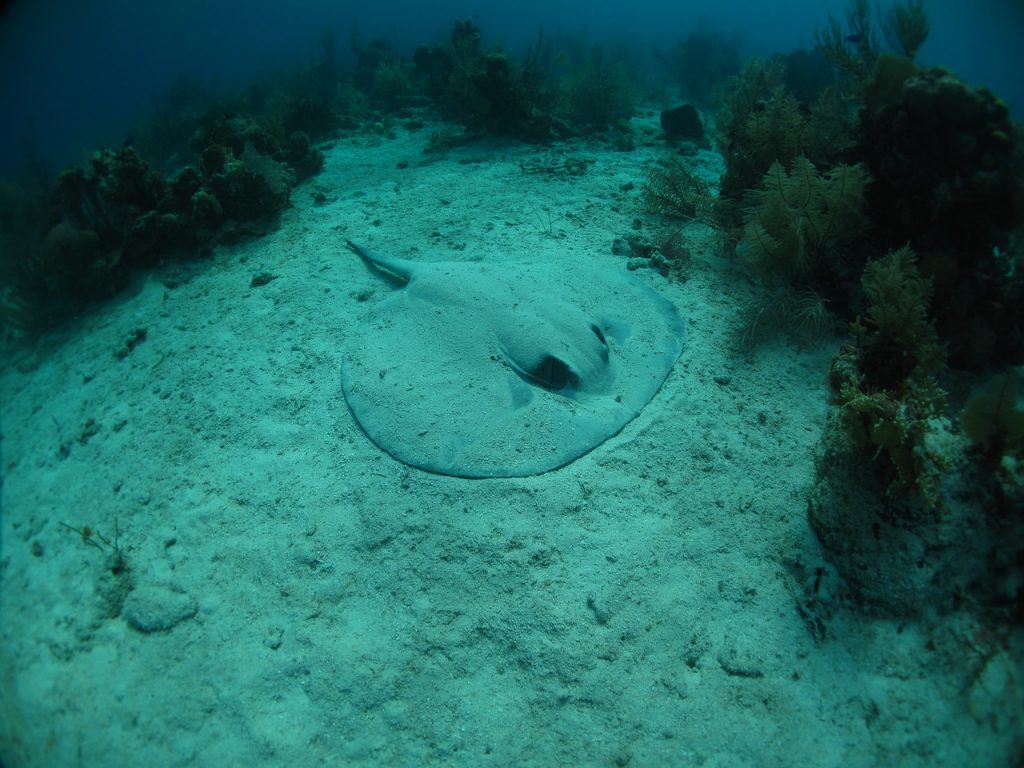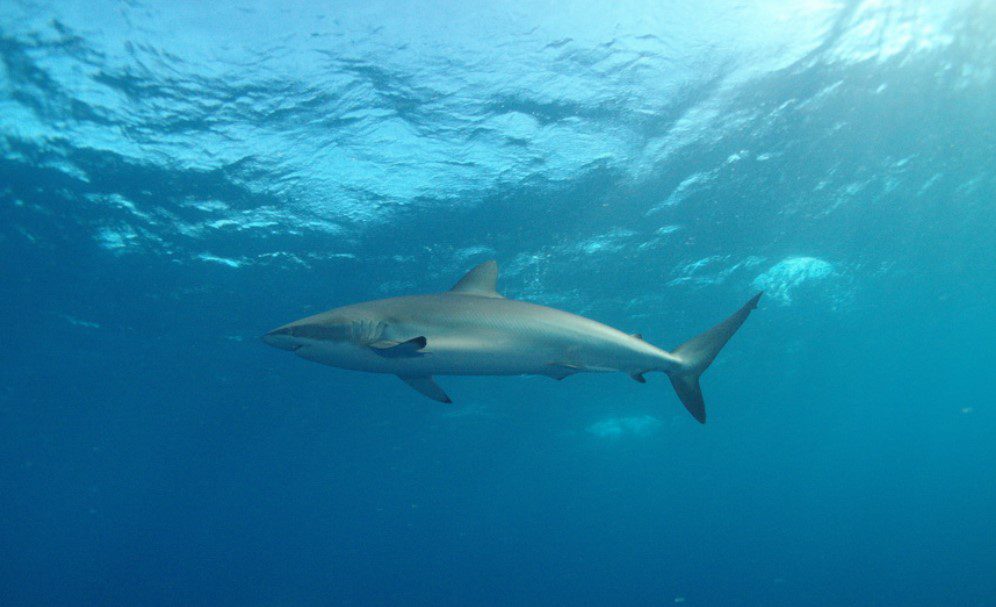Also called the Atlantic chupare, the Caribbean whiptail ray mostly inhabits nearshore brackish and coastal waters, though it is commonly found at several offshore coral reefs and atolls in the western Caribbean. Juveniles may use mangrove habitats as nurseries, moving into coral reef-associated habitats as they grow. The species is important to both fisheries and tourism economies in several countries in Central America and the wider Caribbean. The Caribbean whiptail ray is docile in its natural environment, but is known to vigorously whip its barbed tail back and forth when captured, thus earning its name. Because it has a small range, little is known about the species, such as how fast it grows, when or where it reproduces, or its diet.

Blacktip shark
The blacktip shark is a sturdy, gray, medium-sized shark characterized by the black markings on the tips of its fins and a distinct white ‘z’






